Surprising as it may be, the pig is the second most intelligent animal in the world, preceded only by the chimpanzee. The bronze medal goes to the much loved dolphins.
The pig: a very intelligent and empathetic animal
When it comes to animal intelligence, the pig often tends to be overlooked in favor of more commonly recognized intelligent species such as dolphins, dogs and primates. However, it may surprise you to learn that pigs are very intelligent creatures.
The pig, scientifically known as Sus scrofa domesticuspossess remarkable cognitive abilities that have been increasingly recognized by researchers and animal behaviorists.
The pigs demonstrated remarkable problem-solving skills, spatial memory and aptitude for learning complex tasks. They have excellent long-term memory and learn quickly from both positive and negative experiences. Studies have shown that pigs can navigate mazes, distinguish between different objects, and even play simple video games with commendable accuracy.
The most interesting abilities of the pig are:
Sensory abilities: Pigs have a very developed sense of smell, as evidenced by their well-known use in truffle hunting! Pigs use their noses not only to find food while foraging, but also in a social context: to distinguish other pigs, for mating, and even to distinguish the emotional state of other pigs.
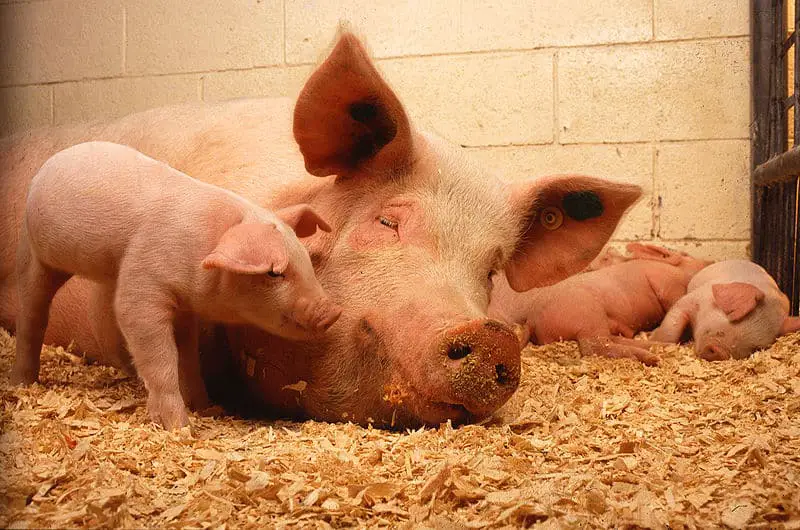
Communication: Pigs have advanced communication skills. Because pigs have a wide hearing range, they primarily use auditory signals (sounds) to communicate with each other. Surprisingly, they also have the ability to communicate with humans: they can learn and respond to human gestures (such as pointing) and vocal signals.
Spatial learning and memory: The pig is exceptionally good at using spatial information: numerous studies have found that pigs are highly competent at learning to navigate mazes.
Tool Use and Problem Solving: We often associate tool use with intelligence. In the list of animals known for using tools are animals such as crows, dolphins, chimpanzees, elephants and others. Now we can add pigs to the list: pigs have been observed to use bark as a shovel to help them dig a nest! Pigs have also been documented to use mirrors as a tool to find hidden objects, demonstrating their innovative problem-solving skills.
Social Complexity: The pig is a highly social animal and forms strong bonds within its social group. It shows a preference for familiar individuals over strangers and can even discriminate between individuals based on smell alone.
Emotional Intelligence: Pigs display a wide range of emotions, including joy, anger, and fear. Their emotional intelligence allows them to respond to complex social dynamics and adapt accordingly. Studies have even found that pigs exhibit emotional contagion, a form of empathy.
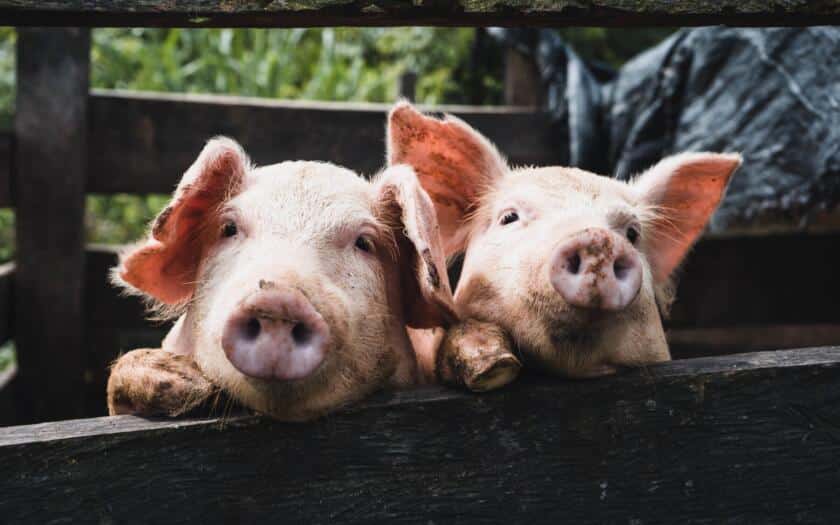
Personality: The pig is an individual, each with its own distinct personality. Many personality traits have been studied in the pig, including boldness, exploration, sociability and coping.
Pigs are indeed intelligent animals, endowed with a fascinating range of cognitive abilities. Their problem-solving skills, social complexity and adaptability testify to their extraordinary intelligence.
There is no doubt that the pig is a sentient being: it has subjective experiences, thoughts, feelings and individual personalities.
Sadly, on average, 22 million of these intelligent, sentient beings are slaughtered every year in Canada alone. Most of these pigs are raised in intensive farmingwhere they are subjected to painful and stressful procedures and raised in cramped and unnatural conditions.
Treating animals with respect, providing adequate living conditions, and minimizing unnecessary harm are essential principles that should be applied regardless of the animal’s level of intelligence.
Some other curiosities about pork
Pigs are very social animals that, when kept in groups, will nestle nose to nose while sleeping. They are very talkative, with a vocabulary of over 20 different sounds. Through high-pitched squeals, pigs can communicate fear, distress and pain to other pigs, while low grunts signal content.
They also have exceptional senses. The pig has evolved to have high-frequency hearing and has an extraordinary sense of smell thanks to very sensitive noses, but they also see the world very differently than we do. This is because their eyes are positioned on the sides of their head giving them a 310° panoramic view of the world around them.
Pigs don’t have functioning sweat glands, which is why they like to wallow in mud during the day to keep cool. Mud also provides the added benefit of protection from the sun. Not a messy pig, just a sun protected pig! But pigs are naturally very clean animals, and when given the right amount of space, they will always poop well away from feeding and sleeping areas.
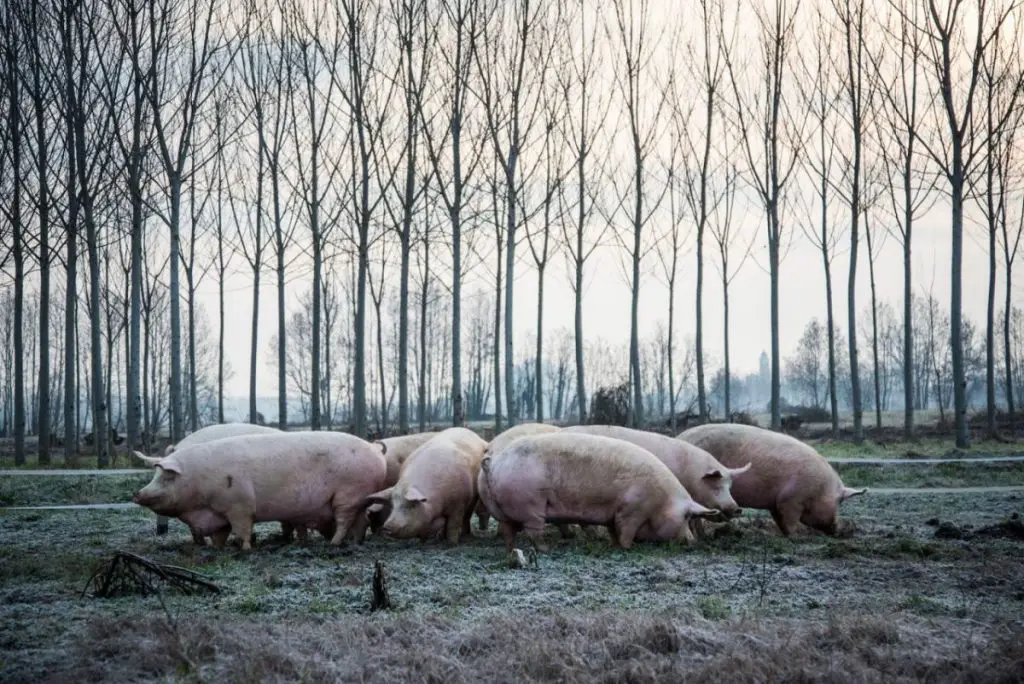
They’re also much faster than you might expect. An adult pig can run up to 18 km/h, which means it can run an entire kilometer in less than four minutes!
The pig responds emotionally to music. The structure of the music is important, as some types of music arouse fear in pigs, while others arouse playfulness, calmness or happiness.
Pigs make a variety of facial expressions to signal aggressive intentions, including shortening their snouts and pointing their ears forward. When pigs are frightened and retreat from an attack, they put their ears back on their heads and close their eyes slightly.
Pig loves to play and playing makes them feel good. When playing and feeling positive, pigs move their tails more and move their ears less.
Pigs can use mirrors! A study on pig learning found that pigs can obtain information from a mirror, such as finding food out of sight but visible in the mirror, indicating evaluation awareness in pigs.
The pig is empathetic. Pigs have been found to exhibit emotional contagion: they feel an emotion after witnessing the same emotion in another individual.
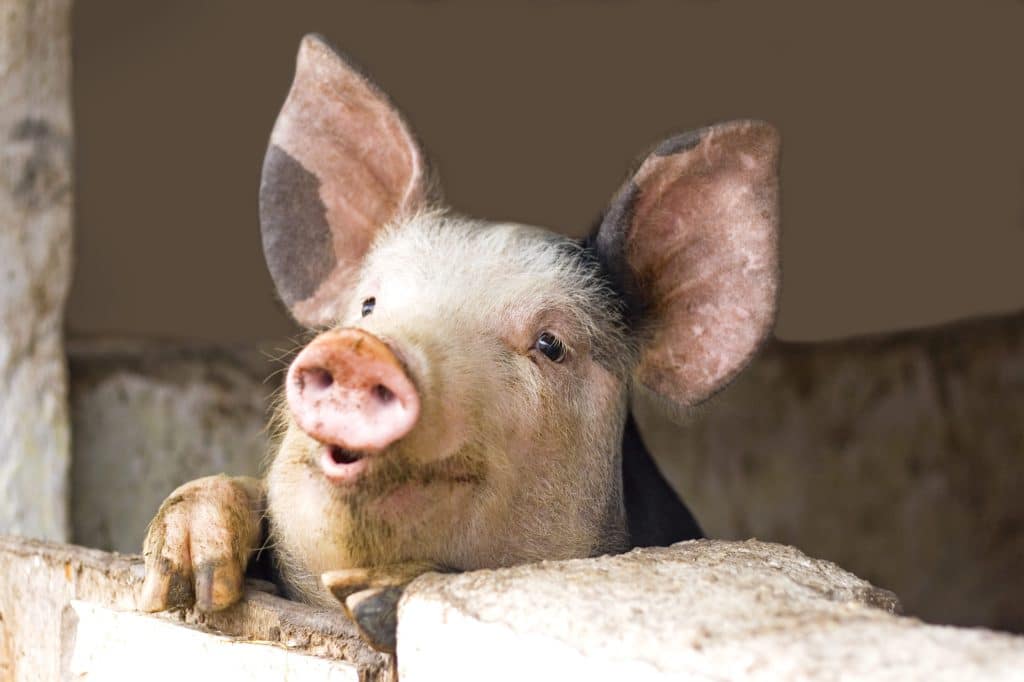
Pigs that have been defeated in previous fights, and pigs with aggressive personalities, feel more emotionally negative when facing a new opponent.
Pigs that witness aggressive fighting between conspecifics actually feel more anxious than the pigs they are fighting. It is likely that they are anticipating the imminent threat of attack. Pig anxiety levels are reduced more quickly after a fight when they can engage in positive social behaviors with other pigs.
This is known as a social buffer and can help protect the pig’s emotional state. Pigs born at a low birth weight have mild cognitive problems, as they require more training for tasks than pigs born at a normal weight.
The harrowing life of a factory-bred female pig
Selectively bred to produce as many piglets as possible, a female pig’s adult life begins when she is first fertilized. This is sometimes done when the pig is as young as eight months old.
Far from natural breeding, for this process she is forced into a small cage – a “sow stall” – where she is artificially inseminated. During multiple pregnancies, she will be moved from one cage to another for the rest of her short life. In an industrial farm, it is just a breeding “machine”.
Unable to turn around, the female pig is caged and lined up with hundreds of sows in a huge shed. Her bars separate her from other pigs so she cannot form social relationships or seek comfort or safety in groups. This is a major source of stress for pigs who are very intelligent social animals. They cannot escape or retreat, ever.
Each cage is no more than six feet long and less than 3 feet wide. It is only slightly larger than the sow’s body and no larger than a household refrigerator.
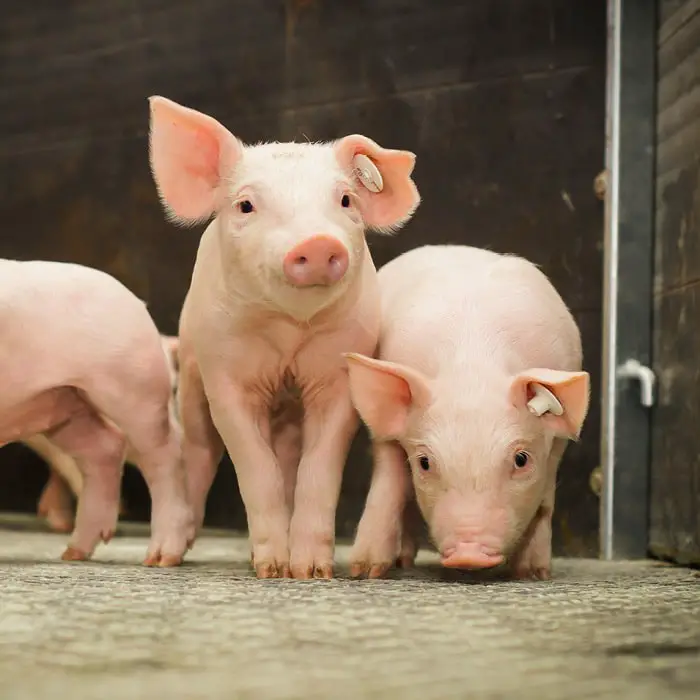
These conditions are far from the comfort the female pig seeks in a meadow in the wild. Pigs like to be clean, but a mother sow on a factory farm is forced to lie in her own waste all day. She gets cramps and develops sores on her shoulders from rubbing against the steel bars.
The concrete floor is hard and she is confined there day after day. Frustrated, she bites the bars of the steel cage surrounding her.
In these cages, mothers spend their entire lives unable to express natural behaviors, forage, or socialize with other pigs. They are kept alone in cages. The pig’s limited mobility and lack of exercise often leads to lameness, and their bleak life leads them to experience intense stress, self-inflicted injuries, and depression.
When the time for farrowing arrives, the sows are moved to another pen, the “farming pen”. Although their natural instinct is to build a nest for their piglets, the farrowing pen, similar to a sow barn, is a sterile concrete pen.
All natural maternal instincts are thwarted.
When the piglets arrive, the steel bars of the farrowing cage prevent the female pig from reaching them. They are unable to form a normal mother-pig bond.
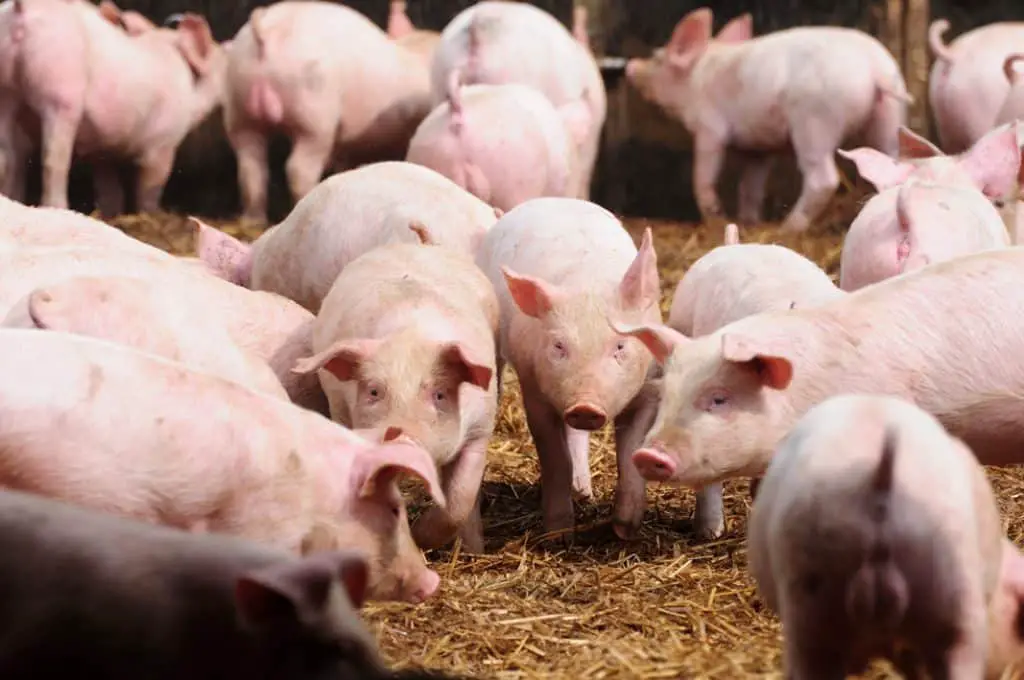
When the female pig’s piglets are only three weeks old, they are forcibly weaned and taken away from them. The sows are returned to the stall where the painful cycle repeats once again.
A female pig will endure multiple pregnancies during her miserable life. That is, until her body begins to deteriorate and she is no longer of any use to the factory farming industry.
This is the life of a caged mother pig. And there are hundreds of them in just one shed; thousands on a farm; tens of millions globally.
But this suffering is avoidable. Keeping sows in groups, rather than cages, is good for animals and good for business. There is no excuse for factory farming.
You can help end pig suffering by eating less pork and choosing higher welfare pork when you eat it. Lower demand for pork from factory farms means fewer pigs will suffer.
#pig #2nd #intelligent #animal #world